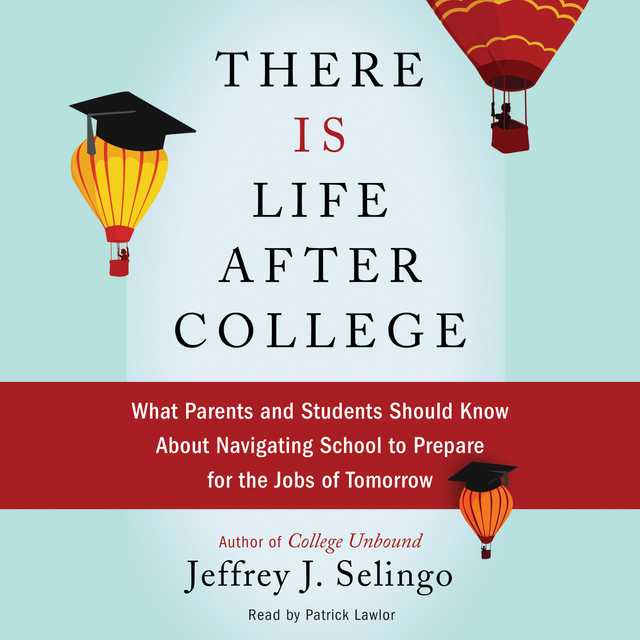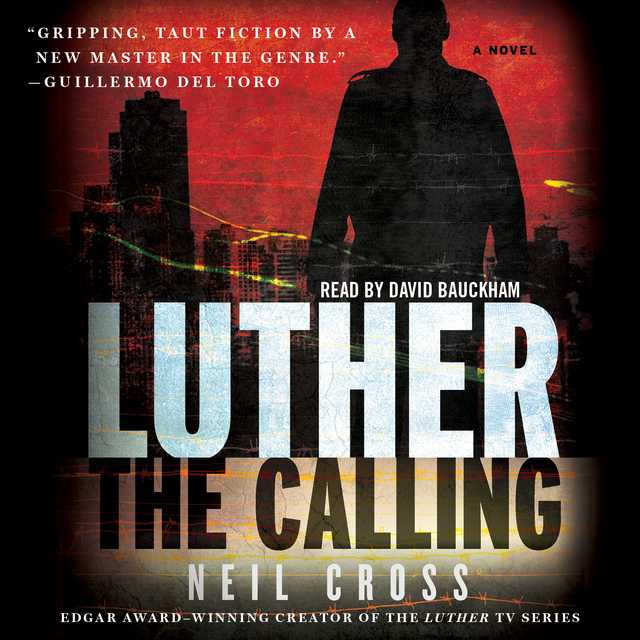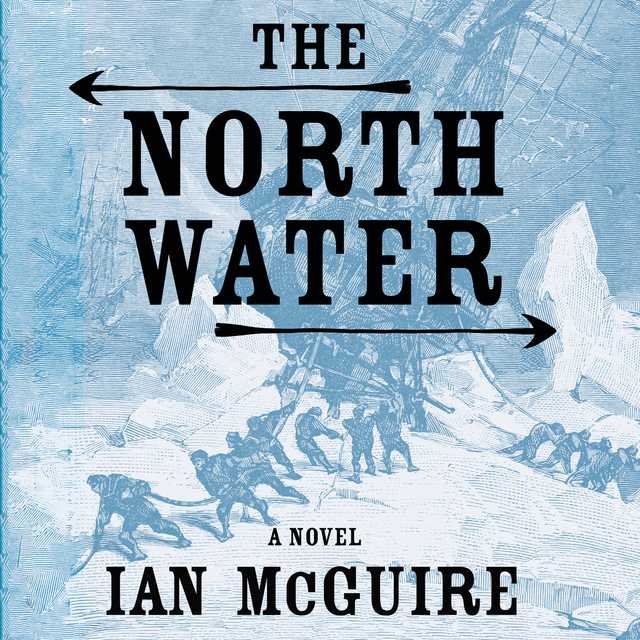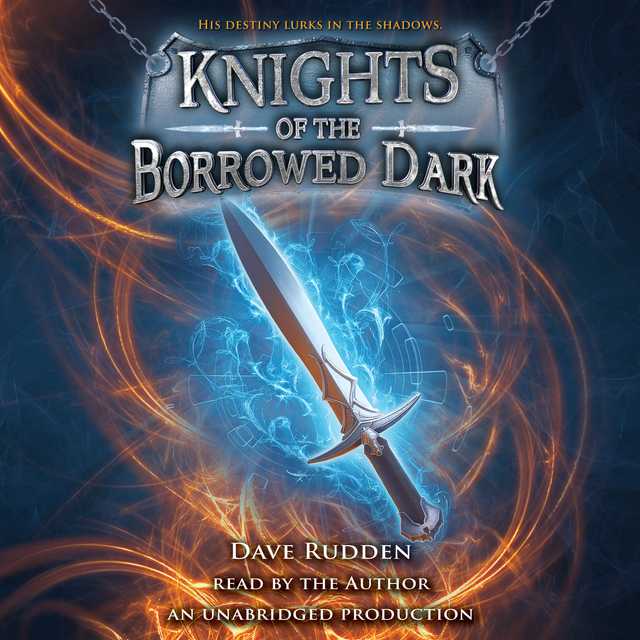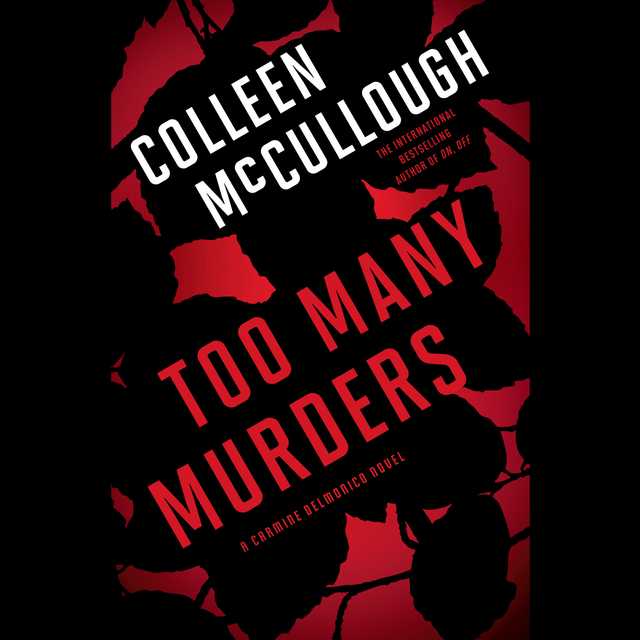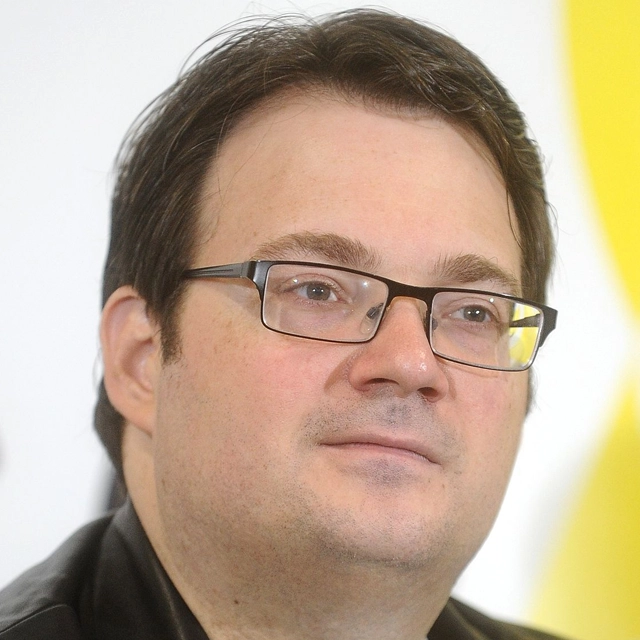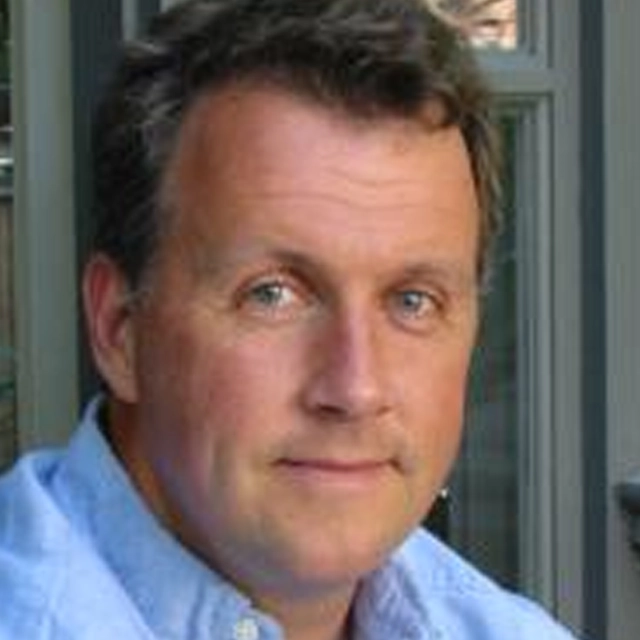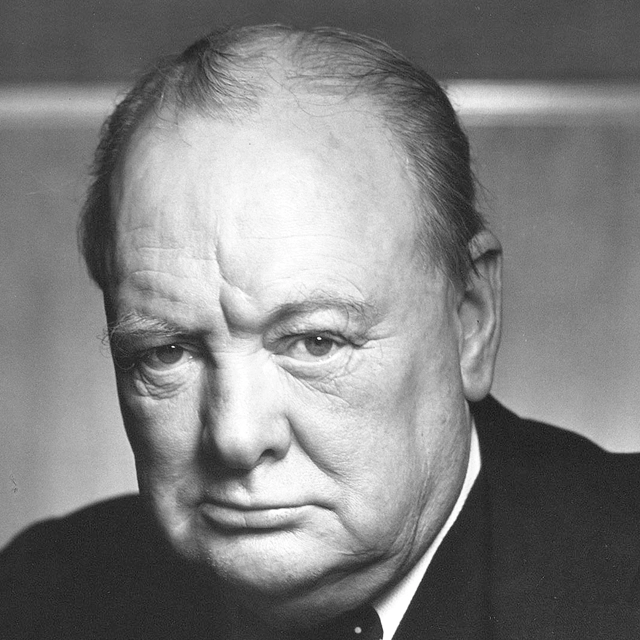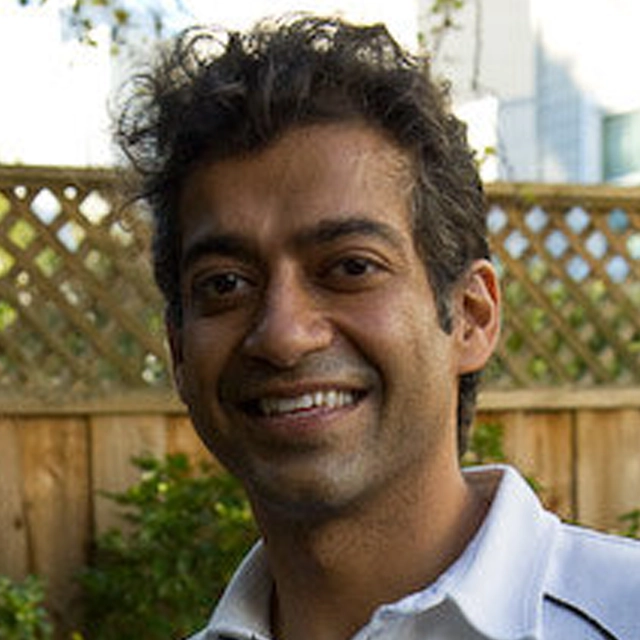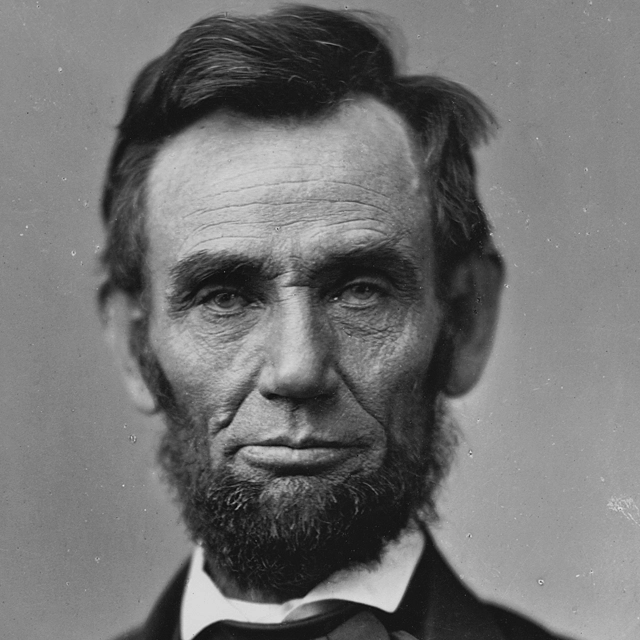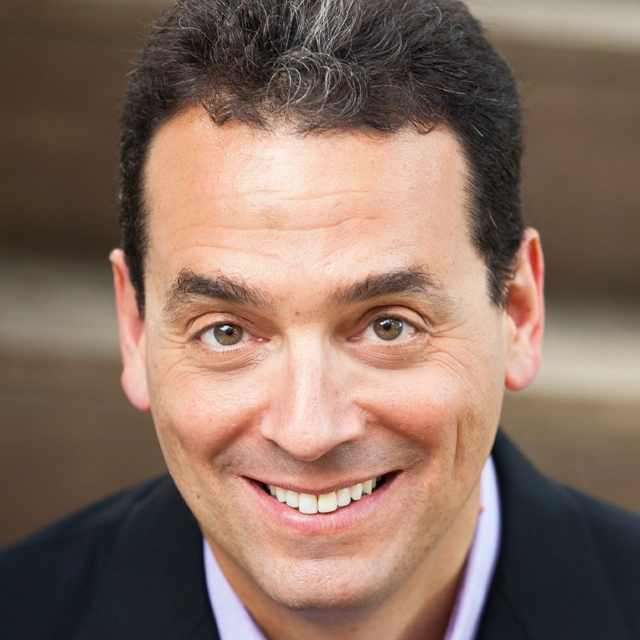There Is Life After College Audiobook Summary
From the bestselling author of College Unbound comes a hopeful, inspiring blueprint to help alleviate parents’ anxiety and prepare their college-educated child to successfully land a good job after graduation.
Saddled with thousands of dollars of debt, today’s college students are graduating into an uncertain job market that is leaving them financially dependent on their parents for years to come–a reality that has left moms and dads wondering: What did I pay all that money for?
There Is Life After College offers students, parents, and even recent graduates the practical advice and insight they need to jumpstart their careers. Education expert Jeffrey Selingo answers key questions–Why is the transition to post-college life so difficult for many recent graduates? How can graduates market themselves to employers that are reluctant to provide on-the-job training? What can institutions and individuals do to end the current educational and economic stalemate?–and offers a practical step-by-step plan every young professional can follow. From the end of high school through college graduation, he lays out exactly what students need to do to acquire the skills companies want.
Full of tips, advice, and insight, this wise, practical guide will help every student, no matter their major or degree, find real employment–and give their parents some peace of mind.
Other Top Audiobooks
There Is Life After College Audiobook Narrator
Patrick Lawlor is the narrator of There Is Life After College audiobook that was written by Jeffrey J. Selingo
Jeffrey J. Selingo has written about higher education for two decades. He is a regular contributor to the Washington Post and is the author of two previous books, College (Un)bound and MOOC U. He is the former editor of The Chronicle of Higher Education. His writing has been featured in the New York Times, Wall Street Journal, and Slate, and he has appeared on ABC, CNN, PBS, and NPR. He is a special adviser and professor of practice at Arizona State University and a visiting scholar at the Center for 21st Century Universities at the Georgia Institute of Technology. He lives with his family in Chevy Chase, Maryland.
About the Author(s) of There Is Life After College
Jeffrey J. Selingo is the author of There Is Life After College
More From the Same
- Publisher : HarperAudio
- Abraham
- American Gods [TV Tie-In]
- Dead Ringer
- House of Sand and Fog
- Prey
There Is Life After College Full Details
| Narrator | Patrick Lawlor |
| Length | 8 hours 14 minutes |
| Author | Jeffrey J. Selingo |
| Category | |
| Publisher | HarperAudio |
| Release date | April 12, 2016 |
| ISBN | 9780062476166 |
Additional info
The publisher of the There Is Life After College is HarperAudio. The imprint is HarperAudio. It is supplied by HarperAudio. The ISBN-13 is 9780062476166.
Global Availability
This book is only available in the United States.
Goodreads Reviews
Jeri
July 27, 2016
As a senior writer for a local university, I'm always in search mode for books that shine a light onto what I see on campus. And after reading Carol Dweck's "Growth Mindset," a book our faculty are using to road-map how to get their students ready for the working world, I saw Jeffrey Selingo's book in our university library in the New Book section and figured, "Why not?" I'm glad I did.Selingo, the former editor-in-chief at the Chronicle of Higher Education, used his journalistic skills to write a clear-eyed book on what families and their college-bound kids face and what universities need to do. "There Is Life After College" reads like a long news-feature. But Selingo segments it out into thematic chapters between 20 to 40 pages long that make his book manageable to read and digest. Plus, it's interesting. Here's a snippet:"Too many students today lack the necessary coping skills and grit to succeed, and they end up in workplaces unwilling to invest in training them. Even the companies considered the best in their industries have reduced what they spend on employee training by 15 percent since 2006. “Yet, colleges are still playing by the old rules on a field built for a previous century. They still regard their role in the transition from college to career the same as they always have – as an interested observer and passive coach. Career services on many college campuses are merely an add-on amenity to the bachelor’s degree, “somewhere just below parking” as a matter of administrative priority, in the words of one university president.”Selingo doesn't just point to problems as in what you read above. He offers solutions he's found at various universities from Arizona State to Georgetown to a few schools in between. He spent two years on the book, and it shows. Good information here, particularly for any parent with a kid bound for college. And yeah, that does include me. After I finished "There Is Life After College," I stood by our copier and ran off the last chapter. I'm going to give it to my son, a rising senior in high school. Maybe that's the best testament to why Selingo's book works. Passing it on to someone who really needs to know.
Molly
June 21, 2016
Every parent of a college age child or recently out of college AND every college age child and recently graduated child NEEDS/MUST read this book. It explains the job market for the 21st century and what the college age/recently graduated person needs to do to be successful.
Parke
June 05, 2016
“’It didn’t prepare me at all for the real world,’ Jessica said somewhat abruptly”. This sentence begins Jessica’s description of her experience at one of the US News top 10 national liberal arts colleges in the US. The quote, from Jeffrey Selingo’s new book, There Is Life After College: What Parents and Students Should Know About Navigating School to Prepare for the Jobs of Tomorrow, also captures in dramatic fashion one of Selingo’s main themes. The book details how schools, educators and students should approach education in ways that are significantly different from those of students a generation ago. Selingo provides useful guidelines for students to achieve success in the increasingly competitive job market. Much of what he shares is supported by data that is nestled alongside specific stories of students, schools and businesses that seem to be doing things right. Selingo does not call so much for disruptive innovation or that other meme for change, a paradigm shift; he does, however, outline the ways that a college degree needs to be far more than a piece of paper that affirms a certain amount of coursework and grades while at the same time permitting students to follow their bliss:Exploration, of course, was what college used to be: the informative stage between adolescence and adulthood. The training for employment we now seem to expect of colleges and universities came later, either in graduate school or on the job. But today, with the cost of college approaching $ 240,000 for four years students (and their parents) demand a set of specific skills that can land them a job at graduation. They still want the broad education— critical thinking, writing and communication, and analytical reasoning— as long as it doesn’t come at the expense of outside-the-classroom, hands-on experiences, particularly internships. Selingo is smart enough to know that the rhetorical battles that take place weekly between those who want education to be liberal arts based in order to instill what he calls a “broad education”, and those who attempt to demonstrate the need students now have for add-on experiences and some depth of understanding about how to solve real problems in the world are not worth the words that are salvoed across the media. Like so much else in life there is some truth to both positions. The kinds of students that Selingo describes as ready for the world have come to be known as T-Shaped. These students have a horizontal line of skills that spans across a broad range of disciplines; they also have a vertical line of expertise in one or more areas. But whereas most pundits or educators stop the T student description at this point, Selingo points out one other set of skills students now need:There’s more to being T-shaped than just having breadth and depth, however. It’s also about having balance and the agility to pick and choose from a set of knowledge and skills, as they are needed. Undergraduates need to cultivate T-shaped skills to prepare for the economy they’ll face after graduation.Selingo is what some would call a hard taskmaster. For him, students must develop many more skills than previous generations of students ever even thought of, let alone learned and internalized.And yet, at the same time, there are many in education and in the media who believe there is far too much stress placed on students today both in high school and college. They have a point. Studies show that students are more depressed, medicated, and unhappy than they have been in previous generations. And while this may well be true, the world has changed, as I have said, in ways most could never have imagined 30 years ago. It is far harder to stand out. The stress is there because the competition has increased. Getting into top schools or high profile internships or jobs require strategic plans and increasingly, to use a popular meme, “the help of trained professionals”. If we go back a bit in time it was generally true the competition for jobs was mostly local, then it stretched to regional, and then it was country specific. Today, globalization has made the search for top talent take place across time zones, continents and governments. To earn an offer from top firms in finance or Silicon Valley or a big consulting firm is far harder than getting accepted to a top 10 university:Placed on each chair across the room was a one-page description of Goldman’s intern recruiting events with the deadlines to apply and the dates for interviews. It was already too late if you wanted a technology internship; most of the other interviews would come in January. Goldman Sachs holds events like this on about sixteen university campuses nationwide, sending a clear but unstated message that if you don’t go to one of those schools, you probably won’t intern at Goldman Sachs. Lauren Goldberg, a recruiter from Goldman Sachs, jumped up onstage to welcome the group. Since very few gathered here had a chance of getting an offer (about 59,000 students apply for 2,900 intern positions each year), her good cheer was helpful.As an undergraduate (and for high school students too), the stress on those going for the top spots is, to put it bluntly, earned. With acceptance rates under 10% at the top ranked colleges and internships at places like Goldman at 5%, “many are called but few are chosen.” But the same time, however, the vast majority of students seem not to have the desire to make it to the top. The data is there to demonstrate that for many students in secondary school and in college the amount of time spent on academics has decreased significantly from previous generations: “College students spend only about a quarter of their week on academic pursuits— going to class or studying, or working at a job— leaving about half of their week for socializing and recreation, according to one survey. No wonder colleges have spent hundreds of millions of dollars building palatial campus recreation centers with climbing walls in the last decade: students use them as often as they use classrooms. Friday has become the “collegiate day of rest,” with many campuses offering far fewer classes on Fridays than other days, effectively training students for four-day workweeks.”Compelling evidence exists that for the majority of students the academic experience, in college and in high school, is not filled with stress and hard work. Selingo cites one book that has not received as much attention as it should-- Academically Adrift:Richard Arum and Josipa Roksa, published a book called Academically Adrift: Limited Learning on College Campuses that described just how much students actually learned in college. The results were devastating— at least to students and parents who had mortgaged their life to pay for school. The pair found that 45 percent of the 1,600 students they tracked at a diverse set of twenty-five colleges and universities made no gains in their writing, complex reasoning, or critical thinking skills during their first two years of college. After four years, the news wasn’t much better: 36 percent failed to show any improvement.What do the seemingly contradictory statistics about overstressed students and students who aren’t learning anything mean? It is pretty clear--students fit into different categories. Some students who are trying to stand out have a harder time than ever. Students, who do not want to work particularly hard, but still want to earn a high school diploma or a college degree, can do so. Selingo has done his own research and he comes up with three categories of students.Three Fates and DanteBased on data from a survey he created, Selingo learns that traditionally aged college students can be divided fairly neatly into 3 groups, each composing about a third of the whole group. While membership to these groups is somewhat fluid, there is still a sense that we are entering into a kind of sorting that is more reminiscent of religious outcomes than which house a student will get into in the Harry Potter books. His model follows Dante far more than J.K. Rowling. Selingo serves as our Virgil and Beatrice and we are stand-ins for Dante as he travels through the Commedia. We visit and talk to those who are blessed, those who have to suffer awhile before being brought to heaven and those who are doomed, if not damned (this is hyperbole on my part, but the tripartite structure that divides students into three realms of experience and three futures does have religious echoes). Instead of taking us through hell, purgatory and heaven, Selingo describes the three kinds of students and the life outcomes they can expect. Selingo gives us data but he lets the individual stories of students negotiating their own “selva oscura”. Unlike Dante, however, Selingo starts his and our journey with the winners. He calls them sprinters:SprintersSprinters by their nature start fast right out of the gate from college. Some have the perfect job lined up, and others are laser-like in their focus, moving from job to job quickly up the career ladder. But speed alone doesn’t define this group. Some are slow but methodical, assembling the building blocks for a successful career early on, mostly by going to graduate or professional school and investing more in their own human capital before hitting the job market. Others collect the right internships and postgraduate experiences, which add key markers to their résumés so they are ready to pounce when the right opportunity comes along. While we imagine this is how most graduates should start out, only one-third of twentysomethings are Sprinters.Sprinters do not fit one template. Some move quickly while others take the slow and steady approach, and others learn how to get experiences outside of college that add luster to their resumes and skills they can bring with them without further training by the companies themselves.Selingo thinks most of us believe students graduating colleges should be ready to compete as sprinters. I am not so sure. Who is the “we” who believes this? Most who work with students see there are many who do not have what it takes to be sprinters. It doesn’t take much to find out that sprinters are not in the majority; most were not sprinters in high school, so it is the exception who turns into one in college (this does happen enough that it is still worth noting).Those that he calls the twentysomthings who become successful sprinters typically start “training” at an early age. Parents provide support-- economic, emotional and academic that prepares them for future success. Selingo more or less contradicts himself when he says that sprinters can be ‘slow and methodical”. I tend to agree more with Angela Lee Duckworth, the person who established the grit scale and whose just published book, Grit is well worth reading: “Grit is living life like it’s a marathon not a sprint.” Many of those who have support early on can, at age 22 or so, be ready to take continue to push forward into competitive jobs and graduate schools. At the same time, however, it is worth pushing the running trope a bit more. Anyone who follows the competitive world of marathons will know that the fastest in the world can run a 4:40 mile for 26 miles. Anyone who has ever run competitively knows how nearly impossibly fast this is.Whether it is sports or academics records keep falling. The 2 hour marathon might happen and there are students who are taking more than 15 APs and getting all high scores. Training, helped by experts, starting early on, helps anyone. Putting in the required time over years (10,000 hours is cited by some researchers) will help someone become what Malcolm Gladwell calls an Outlier. In other words, to get ahead at the highest level, students need to be willing to work exceptionally hard. Salvation, as the religiously minded would put it, is not easy: Because strait is the gate, and narrow is the way, which leadeth unto life, and few there be that find it.Selingo not only describes the externals necessary for the successful race to the top, he also quotes the founders Of Koru, a jobs platform, about the internal traits sprinters have that make them superstar hires:The rock stars were those who, over and over again, stepped up to solve problems,” Hamilton said. “They were very focused on solving problems that seemed to be in front of them, without waiting to be assigned a project or told what to do next.” Hamilton and Jarrett found common threads in what they heard and used them to create the “Koru 7,” the seven competencies they identified as most predictive of high performance: grit, rigor, impact, teamwork, curiosity, ownership, and polish.What stands out about these competencies is that they are not tied to a particular major or field. In other words, it is not as if specific major would, in and of itself, lend it to developing these particular competencies more readily than another. What is also worthy of note is that these competencies are not easy to teach in any class. Instead, much of what Koru thinks predicts future success comes from extracurricular activities, internships and job experience. If Koru’s competencies are accurate they make a strong argument for students to attend 4-year schools with campuses and dorms. But the cost of attending these schools may not be worth it if students do not learn how to learn and learn how to compete in a race, be it a sprint or marathon. Selingo quotes Richard Arum, one of the authors of Academically Adrift to support his contention that only a minority of students are ready to find rewarding work: “There are exceptional students,” Arum said. “There are just not enough of them.” He is concerned about the vast middle, the Wanderers. “The system is not working for large numbers of students”. "Wanderers, part of a growing number of young adults I met who are drifting through their midtwenties and largely treading water in the years after college graduation. My own survey of twentysomethings found that 32 percent of young adults are Wanderers, although some are wandering more than others. As a whole, they are more likely to go to public colleges, where they are less than certain of their major when they enter. Eighty-five percent of them after graduation begin working in a job unrelated to their major."The statistic about Wanderers working a first job not related to a major might make some who support liberal arts education happy. They often say it is not the major but the skill sets that matter to jobs and the future. Forbes puts it this way: That 'Useless' Liberal Arts Degree Has Become Tech's Hottest TicketUnfortunately, the research cited in Academically Adrift and by Selingo shows that many students simply do not have the skill sets necessary to find a job that requires critical thinking and writing skills regardless of their major. In other words, those students who sprint out in front with a liberal arts degree (they have learned the skills valued for by almost any company or job) are going to be rewarded. But the job market is not a place where everyone wins a trophy, not by a long shot. The Wanderers may be getting a degree but are, in many cases, taking jobs that do not require a college degree. These students find it difficult to find a direction that they should head in that will lead to a good job and some long-term security. Selingo’s data demonstrates what many do not know about how much, or I should say, how little, the value of an undergraduate degree now means: “nearly half of college graduates in their twenties are underemployed, meaning the jobs they can get don’t require a bachelor’s degree.”Not surprisingly, many of these students eventually return to school. Given the large number of people who now have undergraduate degree but do not necessarily have the skills to secure a job that requires specific skills, many return to school:The master’s degree is quickly becoming the new bachelor’s degree. In 2013, about 760,000 master’s degrees were awarded, a number that has increased 250 percent since 1980 and is rising at a much faster pace than those earning a bachelor’s degree. Nearly 30 percent of recent graduates are back in school within two years of getting a bachelor’s degree For them, graduate school is akin to having a job because it gives them structure and direction.The dramatic increase in students going on to graduate school helps to prove Selingo’s observation that there is now a much longer timetable to adulthood. The twentysomehtings who are not sprinters (and some who are) are taking much longer to become independent. This does not simply mean that there are more of more of the 18-34 group now live with parents than with significant others. It also means that this group needs more time to develop skills and to test the waters of different opportunities. At least one study says that most people will switch jobs 8 times before they are 30. The wanderers (and sprinters too) often go from job to job, in some cases from one career field to another. Some jobs are not great, but people hope that something will work out.It is important to note the successful Wanderers are unafraid to try new things and to move where the jobs are. They are unafraid of change and willing to take risks. They have the character traits that will help them stand out. These Wanderers can then join the Sprinters as a part of the elite who move through and up positions of responsibility. Selingo tries to give this middle group of wanderers a set of directions/case studies that will help them learn how to move into the the fast lane. He does not, however, have much in the way of saving grace for the last group he describes—the Stragglers.Selingo informs us that about a third of the students he surveyed fall into this least desirable category. They are not wandering across jobs and careers, slowly making their way up; they are, by the standards of finishing college, lost souls:He was a prototypical Straggler. After a decade of dead-end jobs and false starts at a handful of colleges, Josh told me he was finally settling into something he cared about: woodworking.There is nothing wrong with becoming a woodworker or a host of other things that do not require a college degree. However, there is something wrong with the fact it takes a Straggler a decade to figure this out. The vast majority of high school seniors say they want to attend college (well over 90%). Over 65% of them go on to college. Selingo points out, and I think quite rightly, that far too many students head off to college because they really don’t have a clue what they want to do, but feel compelled to go to school because the other options --the military or low-paying jobs-- are not what they want either. Students who are not motivated to do well should think carefully about whether they should go off to college right away. Far too many people start college unprepared and unmotivated. They do not do well early on and this undermines what the somewhat limited motivation some have had. There is a lot of talk about the necessity to learn from failure, but flunking classes at college dos not often lead to a resurrection that will lead to long term success. Those who are not committed to studying tend to end up not finishing and then flounder about looking for a path to take.There are some 12.5 million twentysomethings with some college credits and no degree. Indeed, those in their twenties make up by far the largest share of the 31 million adults in the United States who left college short of a degree. In many ways, these young adults are no better off financially than high school graduates who never attempted college at all. Employers, after all, don’t advertise that they want “some college.” They want a degree. Go here for the rest http://onlyconnectparke.blog
Abby
July 08, 2018
I am a relatively skeptical person when it comes to self-help or life advice books. This book, however, was surprisingly straightforward and informative. I really internalized some of the information, which is often not the case for me. Selingo was not necessarily trying to push for one particular path; instead, he presented information that, if we like, can help guide our decisions. Overall, I'm glad I read this book. It's definitely one of the better books of its kind.
Rose
June 26, 2016
There Is Life After College is a must read for anyone who is in a bachelor's degree program, planning to enter a bachelor's program in the near future, or has a child who is planning to enter a bachelor's program in the near future. Jeffrey Selingo does a fantastic job presenting a comprehensive overview of the current state of higher education and what students need to know to navigate starting a career in their twenties. He also addresses a number of related topics that desperately need a bigger spotlight, such as how and why so many kids are shoehorned into 4-year bachelor's programs straight out of high school. I've never seen anything else that comes close to covering this subject in such detail and from such a fresh perspective.Now 33 years old, I spent much of my twenties feeling as though a bachelor's degree did very little to prepare me for the real world. Beyond that, I felt like I did what I was supposed to do to guarantee a great job right out of undergrad. Needless to say, the journey wasn't quite that easy. It was extremely validating to read a book that confirmed so many of my deepest gripes with the current higher education system and the outright lies many students receive about how to become educated and marketable in the modern economy. I know that I'm not alone in these sentiments. In the past decade since I finished undergrad, the economy has become much more volatile and the job market has become much more unpredictable. These trends aren't likely to reverse any time soon. We need this book now more than ever before.Selingo concentrates a lot of his advice around competitive job fields, such as finance. However, a lot of the tips are applicable across any job field. For example, theater administration may not be a hot field, but there's no question that interning at a local theater over a summer in college is great work experience for anyone interested in a career in theater. I appreciate the wide range of advice that he presents in the book. Many of his tips are inexpensive and straightforward, such as using LinkedIn as a networking and research tool and connecting with alumni while still attending a bachelor's program. From small town college kids without a clear plan for a major and a career to city college kids with clear major and career plans, there is something for everyone here.Finally, I appreciate that Selingo acknowledges the lack of a clear cut path for current students and how he encourages them to find a path that is the best fit for them. He doesn't make any guarantees with his advice about getting ahead in the job market. You can go to a great school, line up stellar internships, and participate in a range of extracurricular activities and still end up having to change your career course drastically because your intended career path doesn't go as planned (any bitter web design majors out there?). His overarching advice about developing soft skills and becoming a lifelong learner with a willingness to view education as an ongoing pursuit will serve students better in the long run than any single internship or graduate degree.
Feng
August 06, 2019
Written by the journalist on education Jeffrey Selingo, this book discusses various aspects of how to optimize college education and experience to be successful in career. The primary premise is that the current college education lags behind the fast development and evolution of the workplace. As a result, many college graduates face difficulty in finding a job and excel in it. The author believes that the modern economy looks for workers with a T-shape knowledge structure. The works need to have a broad spectrum of abilities, including social skills, self-management, lifelong learning, and communications. They need to make the transition from the structured school environment that depend on external instructions and motivation to the uncertain, sometimes chaotic workplace that provides much less supervision and guidance. They also need to be able to switch specialty quickly and productively in response to the rapidly changing business and market conditions. This is the bar in “T."On the other hand, employers also expect college graduates to hit the ground running. This means that the graduates need to have all or most of the knowledge required for a particular job. The “T” knowledge structure is not provided by today’s colleges, which inheres its teaching methods and curriculums from a different age. Therefore, the author concludes, students need to take initiatives and actions to compensate for the college shortcomings and have a successful career after graduation.The book generally follows the steps one would take from high school to college, covering the following topics.• Going directly to college from high school may be the default but not the only choice. One may choose to have a “gap year” to travel and learn to deal with novel and unexpected situations. One may even decide to forgo college and go for vocational schools or community college.• How to choose a college. College location is important because it affects one’s exposure outside of the classrooms. If you have a profession in mind, then look for locations that offer many intern opportunities.• In college, look for hands-on learning experiences such as projects and internship. Do not just follow the liberal arts curriculum.• After college graduation, maybe you need to fill some skill or knowledge gaps before getting a good job. There are many resources, such as short training courses, boot camps, and apprentice programs, to help you do it. There are also alternatives to graduate school for gaining advanced skills.• Other than the traditional college programs, there are many movements and innovations to deliver college education that is more relevant to job skills. Other programs are more flexible to allow for working and studying at the same time.• In addition to the four-year bachelor’s program, other forms of college education are emerging. These new forms support part-time learning and life-long learning.• Relevant skills for finding a job: interviews and job search techniques.• Career planning: college is not a goal by itself; it is a step in the entire career. So think about how to fit a college education into the life-long career effort. This chapter also includes career choice tips.This book is a journalistic work. Namely, it is based on stories more than theories or logic. The author’s advice centers on one point: make your learning relevant to job seeking and job growth. Other than that, the book is in large extent driven by the material available to the author. This is good in a sense because the book does not appear to have a bias supported by selective evidence.On the other hand, there are some inconsistencies in the book. For example, in the beginning, the author emphasized the importance of critical thinking skills in today’s workplace. And at some point later, the author said literary courses such as philosophy and history are an excellent way to cultivate critical thinking. However, the rest of the book focuses on learning specific job skills such as programming, without discussing approaches to strengthen critical thinking skills. Fortunately, nobody is likely to take all of the advice from the book anyway; they are meant for different people with different situations. So such consistency is unsubstantial. My more substantial objection is that the book has a very limited scope. It focuses on the strategy of finding desirable work after graduation. This is not the whole purpose of college education, which is also supposed to help us master new knowledge and take on new responsibilities in our decades of working life. It would be beneficial if the author interviewed middle-aged workers and retirees to get their take on college education. More importantly, our benefit from education also includes being better citizens and leading more enlightened lives within and without work. Therefore, not everything we do in college has to be tied to immediate career benefits. Not mentioning these points may mislead our youngsters when they seek the most meaningful college experience.Overall, this is a thoughtful and comprehensive guide to college life. I highly recommend it to high school and college students and their parents.
Reid
December 21, 2016
“Our twentieth-century education system is woefully out of sync with this twenty-first-century economy that demands highly knowledgeable and flexible workers.” This quote from the introduction of Life After College perfectly sums up the entire book. To simplify this quote, education is woefully out of sync.When I graduated college Myspace was the reigning champion in social media. Facebook, at the time, was a hobby or diversion for a few college students. Today, Myspace is a memory and Facebook dominates not just social media but our entire online experience. Rapid technological innovations and global market change everything we know almost constantly. Businesses and organizations cannot keep up. Education, from kindergarten to graduate schools, lag behind even further.Life After College is really about promoting education outside of college. Selingo introduces the reader to the importance of gap years, bridge programs, on-the-job training, internships, geographic advantages and so forth.College is not the final straw anymore. It may be a very important straw, but it is not the final one. Gone are the days when simply getting a college degree guarantees you economic stability. With a growing number of college graduates and competition from people around the world, a college graduate needs to show up with more than a fancy diploma. “What you do in college is more important that where you go to college” (215).I enjoyed this book a lot. Selingo knows his stuff and his writing is impeccable. I’m not a fan of gap years and bridge programs. I think these programs only highlight the change needed in higher education. Additionally, I am not a supporter of gap years because I know without a doubt that a gap year would have been detrimental for me. Delaying formal education would have been a bad idea for me. Even though I changed my major three times in college and my career goals a dozen times, college still gave me the structure and space I needed to succeed.My favorite piece in the book is the chapter on employers. Usually we hear about how employers are frustrated at their new hires, so it was great to hear how employers are also lost and unprepared.I am always disappointed when I read about students choosing a college or a career and there is very little discussion about passion or higher calling. Finding a job that pays well is important, but finding a job that employs your strengths, empowers your soul, and inspires your passion is absolutely vital. That's why I really enjoyed the last chapter of the book describing your career story.This is a great book with amazing information.
Zhuo
January 27, 2018
very helpful. Skills for success: curiosity, creativity, grit, digital awareness, contextual thinking and humility1. Be curious, ask questions, and be a learner for life;2. Build an Expertise, take risks, and learn the meaning of grit;3. Every job is a Tech job, if you have analytical ability to go along with writing and communication skills. Data-driven skills in a variety of occupations are the future.4. Learn to Deal with Ambiguity. We should compliment children for their efforts instead of intelligence, as the latter is out of our control.
Claire
May 28, 2018
I loved Selingo's book College (Un)bound, Wish I had read this one sooner. Good perspective on the ways in which our higher ed system is disconnected from the workplace, and the value for individual students in taking gap years, focusing on skills they care about, and exploring their interests early enough to let those impact their majors. In addition, the book celebrates the value of internships that offer a real opportunity to test out skills and see what a workplace is like (whether through co-op programs or outside those). Makes me want to tackle some of the systemic gaps.
Angie
October 26, 2020
I thought this was a good book for what it set out to prove. However I disagree with some of the points that were made in it. College isn’t the only way to get ahead in life but for those who take that path this is a good book to listen to or read.
Stephanie
December 07, 2017
I suggest parents read this before your kid goes to college. college is a whole different universe now, the helicopter parents have transformed it. This book will help you talk to your kid about what's important and help you know when to step back and let them make mistakes.
Jon
January 10, 2021
The book does a great job of pointing out the changing nature of jobs and the difficulty in getting them, especially by following the advice of the 1980s and before. Unfortunately, just like the job market, the advice in this book is often scattered and often conflicts with itself.
Meghan
May 05, 2017
I find this book to be so valuable for current college students and families as well as those about to enter that world. It is so relevant and holds important information that students should consider in navigating their college journey.
Leah
July 24, 2017
You AND your student need to read this!
Chihiro
May 16, 2018
A very informative book.
Frequently asked questions
Listening to audiobooks not only easy, it is also very convenient. You can listen to audiobooks on almost every device. From your laptop to your smart phone or even a smart speaker like Apple HomePod or even Alexa. Here’s how you can get started listening to audiobooks.
- 1. Download your favorite audiobook app such as Speechify.
- 2. Sign up for an account.
- 3. Browse the library for the best audiobooks and select the first one for free
- 4. Download the audiobook file to your device
- 5. Open the Speechify audiobook app and select the audiobook you want to listen to.
- 6. Adjust the playback speed and other settings to your preference.
- 7. Press play and enjoy!
While you can listen to the bestsellers on almost any device, and preferences may vary, generally smart phones are offer the most convenience factor. You could be working out, grocery shopping, or even watching your dog in the dog park on a Saturday morning.
However, most audiobook apps work across multiple devices so you can pick up that riveting new Stephen King book you started at the dog park, back on your laptop when you get back home.
Speechify is one of the best apps for audiobooks. The pricing structure is the most competitive in the market and the app is easy to use. It features the best sellers and award winning authors. Listen to your favorite books or discover new ones and listen to real voice actors read to you. Getting started is easy, the first book is free.
Research showcasing the brain health benefits of reading on a regular basis is wide-ranging and undeniable. However, research comparing the benefits of reading vs listening is much more sparse. According to professor of psychology and author Dr. Kristen Willeumier, though, there is good reason to believe that the reading experience provided by audiobooks offers many of the same brain benefits as reading a physical book.
Audiobooks are recordings of books that are read aloud by a professional voice actor. The recordings are typically available for purchase and download in digital formats such as MP3, WMA, or AAC. They can also be streamed from online services like Speechify, Audible, AppleBooks, or Spotify.
You simply download the app onto your smart phone, create your account, and in Speechify, you can choose your first book, from our vast library of best-sellers and classics, to read for free.
Audiobooks, like real books can add up over time. Here’s where you can listen to audiobooks for free. Speechify let’s you read your first best seller for free. Apart from that, we have a vast selection of free audiobooks that you can enjoy. Get the same rich experience no matter if the book was free or not.
It depends. Yes, there are free audiobooks and paid audiobooks. Speechify offers a blend of both!
It varies. The easiest way depends on a few things. The app and service you use, which device, and platform. Speechify is the easiest way to listen to audiobooks. Downloading the app is quick. It is not a large app and does not eat up space on your iPhone or Android device.
Listening to audiobooks on your smart phone, with Speechify, is the easiest way to listen to audiobooks.

